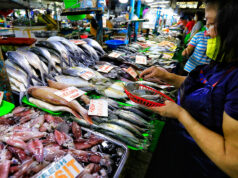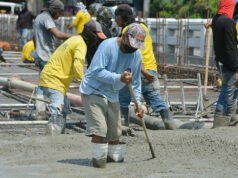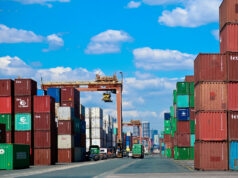Expect ‘very strong’ action today — BSP exec
LONDON — The Bangko Sentral ng Pilipinas (BSP) will take “very strong” action at its meeting on Thursday, BSP Deputy Governor Diwa C. Guinigundo said here on Tuesday, a move likely to be its fourth hike in interest rates in a row.
The central bank is widely expected to raise its key interest rate by 50 basis points (bps) to 4.5% in a bid to curb inflation and shore up the shaky peso currency, according to a Reuters poll.
A BusinessWorld poll late last week yielded the same expectation.
“I expect very strong monetary policy action,” Mr. Guinigundo told Reuters at an investor meetings in London.
“We expect inflation for the last four months of the year to remain elevated and there are volatilities in the foreign exchange market. Volatilities in FX market could spill over to the real economy and produce more pressures on prices.”
The BSP has hiked interest rates by 100 bps since May, to tamp down price pressures from higher taxes, a peso down almost nine percent since January as well as rising food and fuel costs.
“If you are coming from the direction that the central bank is behind the curve then you don’t need 50 basis points, it is probably 100 basis points or 75 basis points,” Mr. Guinigundo said.
“But I don’t think that is where we are coming from.”
He also said there were other tools in place such as reserve requirements for banks which at 18% are some of the highest in the world. He added that these could even go up to 20% at some point, if deemed necessary.
INFLATION MAY EASE
For economists at First Metro Investment Corp. (FMIC) and the University of Asia and the Pacific (UA&P), inflation may have eased in September but still remained above six percent, likely prompting another strong rate hike from the central bank.
The analysts see inflation at 6.2% this month, when the Philippine Statistics Authority reports data on Oct. 5, slower than August’s 6.4% although still a leap from the three percent climb clocked in September 2017. If realized, this would again settle beyond the BSP’s 2-4% target range for 2018.
Surging food prices as well as world crude oil rates drove inflation to a nine-year peak last month, driven largely by supply constraints for cheap rice, meat, fish and vegetables. Consumer prices have maintained a steady ascent since the year opened, to which the central bank responded by raising benchmark interest rates by a cumulative 100 basis points (bp) from May to August.
The FMIC and UA&P analysts said the tightening cycle is not yet over, as they joined calls for another 50bp hike in today’s rate-setting meeting of the BSP.
“We expect the Monetary Board to lift policy rates by 50 basis points to 4.5% this month as it seeks to cool inflationary expectations and exchange rate pressures,” they said in the latest issue of The Market Call.
BSP Governor Nestor A. Espenilla, Jr. last week committed to “take strong immediate action” in response to the faster-than-expected August inflation rate.
Many bank economists have priced in a 50bp hike in today’s meeting, noting that the impact of damage from typhoon Ompong likely stoked price pressures further. Inflation has averaged 4.8% for the first eight months, against the BSP’s 4.9% full-year estimate.
Still, the analysts believe that inflation has already peaked, as they expect price increases to ease in anticipation of additional rice supply from imports as well as from the harvest season.
Malacañang on Sept. 21 issued orders designed to facilitate delivery of agricultural products from farms to the retail market. July-September is a lean season for rice, which has a heavy contribution to inflation.
The analysts also believe the peso will “continue to weaken” against the dollar, moving closer to the P55 level by yearend.
Still, they expect faster economic growth this semester, supported by infrastructure investments despite tepid consumer spending amid rising costs.
“The desired investment-led growth paradigm that now dominates the country’s development should continue at elevated levels, as large public-private partnership projects (considered as private construction) add to the growing roster of ongoing and upcoming infrastructure projects,” The Market Call read.
“Robust capital goods imports and the manufacturing sector output should add to domestic demand while exports should move into positive territory in H2.”
A recovery in exports should boost growth prospects this semester, supported by improving global demand.
The Philippine economy expanded by 6.3% in the first semester, compared to 6.6% a year ago, a far cry from the government’s 7-8% target for the entire year. — Reuters and Melissa Luz T. Lopez



